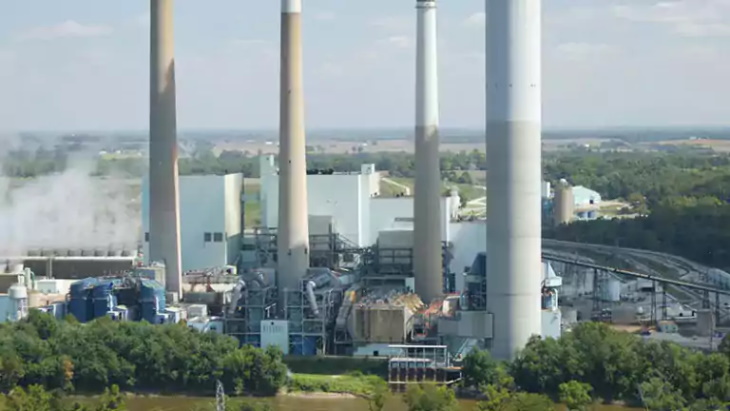Source: https://www.world-nuclear-news.org/Articles/US-study-examines-feasibility-of-coal-to-nuclear-c
A study by researchers at the University of Michigan ranks the feasibility of converting 245 operational coal power plants in the USA into advanced nuclear reactors, providing valuable insights for policymakers and utilities to meet decarbonisation goals.
In 2022, coal-fired power plants accounted for nearly 20% of total energy generation in the USA, resulting in the emission of 847 million metric tonnes of CO2, equivalent to 55% of the country's total CO2 emissions from the power sector.
Coal power plants (CPPs) are being phased out in many countries, including the USA. Utilities across the nation have incorporated the transition from coal-fired generation to cleaner energy resources into their Integrated Resource Plans. Furthermore, several utilities have set a goal to retire all CPPs within the next 15 years.
As part of this transition, there is a need to repurpose retired CPPs to alternative clean sources - one possibility is nuclear energy, which can generate the same stable base load of energy as coal but with zero carbon emissions, the study says.
Rather than establishing new sites, transitioning operational CPPs to nuclear plants can save time and money by using existing equipment like transmission lines and power system components. Surrounding communities also stand to benefit from the transition, retaining jobs and tax bases as coal plants are phased out.
The new University of Michigan study systematically evaluates the potential for coal-to-nuclear (C2N) energy transitions in the USA using the Siting Tool for Advanced Nuclear Development (STAND). Developed by the University of Michigan, National Reactor Innovation Center in Collaboration, Argonne National Laboratory, Idaho National Laboratory and Oak Ridge National Laboratory, STAND enables users to input socioeconomic factors, safety, and proximity parameters to select potential advanced nuclear reactor development sites.
"The tool's ability to evaluate multiple sites simultaneously while balancing a suite of objectives offers a more scalable and robust analysis than previous studies, which focused on a few specific plants," the researchers noted.
The 245 operational coal plants studied were classified into two different groups based on their nameplate capacity. "Since advanced nuclear reactors are divided into various classes, such as microreactors, medium-scale reactors, and small modular reactors, it is necessary to categorise coal plants accordingly to match their capacity for a smooth transition to nuclear power," the study says.
Results revealed a broad spectrum of suitability levels and tradeoffs across different locations, highlighting both the feasibility and complexity of transitioning from coal to nuclear capacity. For the smaller electric capacity group, the feasibility score ranged from 51.52 to 84.31 out of 100 with a median of 66.53. The larger electric capacity group ranged in feasibility scores from 47.29 to 76.92 with a median of 63.97.
The R M Schahfer coal plant in Indiana emerged as the most feasible smaller electric capacity site, generating 1000 MWe or less, while the AES Petersburg plant in Indiana was top-ranked among the larger electric capacity sites, having generation capacity greater than 1000 MWe.
"The analysis conducted by STAND can benefit energy modelers, stakeholders, policymakers, utilities, and energy industries in making informed decisions," the study concludes. "It provides a top-down approach to assessing the potential for C2N transition in different coal sites. However, it is essential to emphasise that further on-site geological investigations, environmental assessments, and community engagement processes are necessary before finalising decisions related to reactor licensing."
"My hope is that this work, which looks at the potential for coal-to-nuclear transitions in a very granular way, for each coal plant across the country, can inform the national and state-level conversations that are unfolding in real time," said Aditi Verma, assistant professor of nuclear engineering and radiological sciences at University of Michigan and senior author of the study.
The study - published in Energy Reports - was sponsored by the Department of Energy Office of Nuclear Energy, funded through the Nuclear Energy University Program.
The possibility of replacing coal power plants with nuclear capacity is being actively explored in the USA and elsewhere. TerraPower in 2021 announced plans to build a demonstration unit of its Natrium sodium-cooled fast reactor at a retired coal plant site in Wyoming; in 2022, the the Maryland Energy Administration announced its support for work to evaluate the possibility of repurposing a coal-fired electric generating facility with X-energy’s Xe-100 small modular reactor; and Holtec International recently said it is considering coal plant sites as possible locations for its SMR-160 with plans to bring the first unit online as early as 2029. In Poland, NuScale is exploring with energy company Unimot and copper and silver producer KGHM possibilities for its reactors to replace coal-fired power plants.
